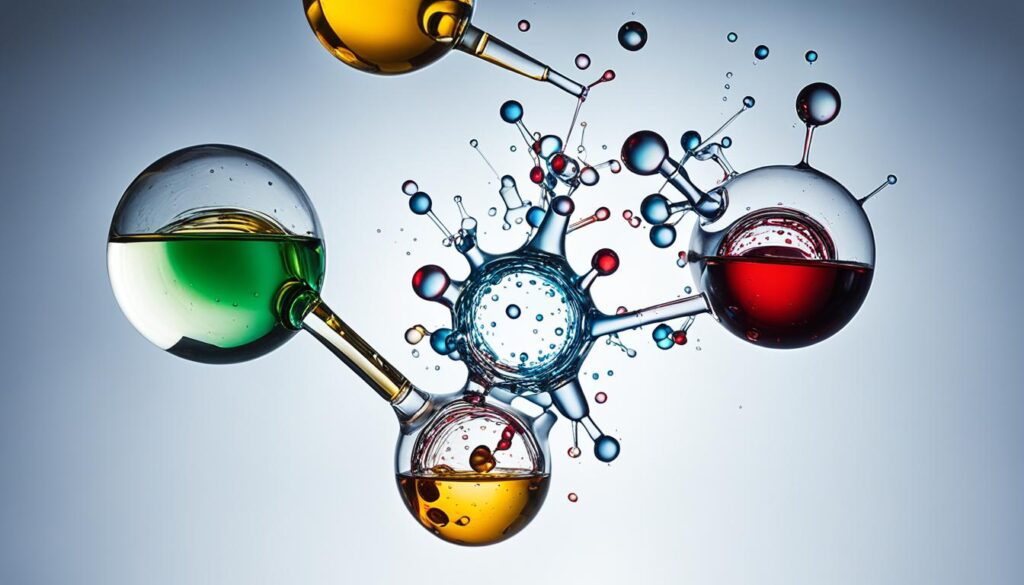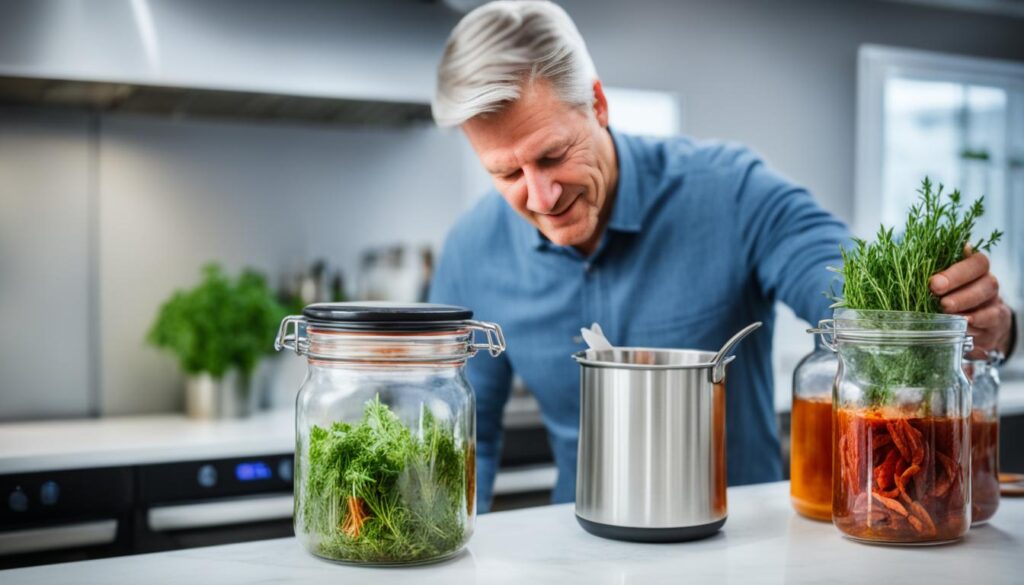Have you ever wondered how bartenders create those tantalizingly flavorful and complex cocktails? What if we told you that the secret lies in using fats and oils to infuse spirits? That’s right! The technique known as fat washing has revolutionized the world of mixology, allowing bartenders to unlock a whole new level of taste and aroma in their creations. But how does it work? Let’s dive into the science behind fat washing spirits for cocktails.
Fat washing is a process that involves adding a liquid fat, like sesame oil or melted butter, to a spirit and letting it infuse for a certain period of time. During this time, the fat imparts its flavors to the spirit, resulting in a rich and unique taste profile. But what makes this technique so effective?
- Using alcohol as a solvent, fat washing extracts both water-soluble and oil-soluble flavors from the fat or oil.
- Alcohol molecules have polar and non-polar ends, enabling them to dissolve a wide range of flavor compounds.
- The polar end of the alcohol molecule bonds with water-soluble flavors, while the non-polar end bonds with oil-soluble flavors.
- Freezing the mixture helps solidify the fat, making it easier to separate from the spirit before use.
- The resulting fat-washed spirits boast a complex flavor profile that adds depth and character to cocktails.
Now that we’ve uncovered the science behind fat washing spirits for cocktails, it’s time to explore the history, techniques, and tips associated with this innovative mixology technique. Stay tuned to discover the fascinating origins of fat-washed cocktails, learn the best fats and oils for fat washing, and master the art of this flavorful process.
Key Takeaways:
- Fat washing is a technique used in mixology to infuse spirits with the flavors of fats or oils.
- Using alcohol as a solvent, fat washing extracts both water-soluble and oil-soluble flavors from the fat or oil.
- The resulting fat-washed spirits add a rich and complex taste to cocktails, elevating their flavor profiles.
- Stay tuned to learn more about the history, techniques, and tips associated with fat washing in mixology.
- Unlock a whole new world of flavor and create innovative cocktails using the science of fat washing.
The History of Fat-Washed Cocktails
The technique of fat-washing cocktails has a rich history that dates back to influential bartenders who pioneered this unique flavor infusion method. One of the key figures in the development of fat-washed cocktails is Don Lee, renowned for creating the popular Benton’s Old-Fashioned, a bacon-infused cocktail that became a sensation.
Don Lee learned about the fat-washing technique from another talented bartender, Eben Freeman, who was working at the innovative WD-50 at the time. Eben Freeman’s brown-butter-washed rum also played a significant role in popularizing this method within the cocktail community.
The technique was inspired by the practices of perfumers, who use fat-washing to extract aromas from compounds.
Since its introduction, fat-washing has become a regular practice in cocktail bars worldwide and has been utilized to infuse spirits with a wide range of flavors. Bartenders have experimented with various fats and oils, including bacon, peanut butter, sesame oil, and even grilled cheese sandwiches, to create unique and memorable cocktails.
With a rich history and the creative contributions of influential bartenders, fat-washed cocktails continue to captivate cocktail enthusiasts and push the boundaries of mixology.
The Science Behind Fat Washing
Fat-washing is a fascinating technique that relies on the science of molecular bonding to infuse spirits with rich and unique flavors. It all begins with the properties of alcohol as a solvent for both water-soluble and oil-soluble flavors.
Alcohol molecules have polar and non-polar ends, allowing them to dissolve a wide range of flavor compounds. The polar end of the alcohol molecule is water-loving, enabling it to bond with water-soluble flavors. Conversely, the non-polar end is oil-loving, facilitating bonding with oil-soluble flavors. This molecular bonding is crucial for the fat-washing process, as it enables the extraction of both fat- and water-soluble flavors from the chosen fat or oil.
“The polar end of the alcohol molecule is water-loving, while the non-polar end is oil-loving.”
When fat-washing spirits, the fat or oil used imparts its flavors to the alcohol. As the mixture sits, the alcohol molecules bond with the fat-soluble flavors present in the fat or oil. These flavors are then carried through the solvent properties of alcohol, resulting in a spirit infused with rich, oil-based flavors.
To separate the fat from the spirit, the mixture is chilled. The low temperature solidifies the fat, making it easier to skim off or strain. This step is essential for achieving a clean, well-defined flavor profile.
The Molecular Bonding Process
The molecular bonding of alcohol and oil in fat-washing is a key factor in creating unique cocktails. It allows bartenders to experiment with a wide range of fats and oils, each imparting its own distinct flavors.
During the fat-washing process, alcohol acts as a bridge between the flavors in the fat or oil and the spirit. The polar end of the alcohol molecule attracts water-soluble flavors, while the non-polar end attracts oil-soluble flavors. The alcohol molecules effectively carry these flavors into the spirit, resulting in a harmonious blend of complimentary tastes.
Additionally, the cold temperature used in the fat-washing process helps to solidify the fat, enabling its separation from the spirit. This step ensures that only the desired flavors are infused, without any unwanted residue or greasiness.
| Fat-Washing Benefits | Molecular Bonding |
|---|---|
| Infuses spirits with unique, complex flavors | Alcohol acts as a bridge between fat and the spirit |
| Allows for experimentation with a variety of fats and oils | Polar and non-polar ends of alcohol molecules attract water and oil-soluble flavors |
| Enhances the overall taste profile of cocktails | Flavors carried through solvent properties of alcohol |
| Offers a creative and innovative approach to mixology | Enables separation of fat from the spirit through chilling |

The science behind fat washing showcases the intricate relationship between alcohol, fat, and flavor compounds. By understanding and leveraging this molecular bonding process, bartenders can create truly unique and memorable cocktails that elevate the mixology experience.
Techniques and Tips for Fat Washing
When fat washing cocktails, it’s important to choose the right fat or oil for the desired flavor profile. Different fats impart different flavors and textures to the final cocktail. Here are some tips to help you achieve successful fat washing:
- Choose the Best Fats: Fats with strong flavors, such as bacon lard or sesame oil, may require a lower fat to spirit ratio to avoid overpowering the cocktail. Lighter oils like coconut oil can add a subtle coconut aroma, while avocado oil and olive oil provide a silky texture.
- Melt and Combine: Start by melting the fat or oil and combining it with the spirit in a clean container. Use the right amount of fat or oil based on your recipe or desired intensity of flavor.
- Let It Sit: Allow the fat and spirit mixture to sit for a period of time to allow the flavors to infuse. The length of time will depend on the fat or oil used and the desired intensity of flavor. Some recipes may call for a few hours, while others may recommend overnight infusion.
- Separate and Chill: After the infusion period, place the mixture in the fridge or freezer to chill. The fat will solidify, making it easier to separate from the spirit. You can then skim off the solidified fat or strain the mixture to remove it.
- Proper Storage: Store your fat-washed spirits properly in airtight containers or bottles to prevent bacterial growth. It’s important to keep them refrigerated or at the appropriate temperature to maintain their quality.
Experimentation is key when it comes to fat washing cocktails. Don’t be afraid to try different fats and oils to discover new and exciting flavor combinations. With practice and creativity, you can master the art of fat washing and elevate your cocktail game to new heights.

Conclusion
Fat washing has undoubtedly transformed the world of mixology, offering bartenders the opportunity to craft cocktails with unparalleled and intricate flavors. By infusing spirits with fats or oils, they unlock a level of depth and complexity that traditional infusions simply cannot match. The molecular gastronomy behind fat washing lies in the intricate bonding of fat-soluble and water-soluble flavors with the alcohol, creating a harmonious blend of taste sensations.
While the process of fat washing can be time-consuming and requires a fair amount of experimentation, the end results are undeniably worth the effort. From the tantalizing embrace of bacon-infused bourbon to the silky smoothness of olive oil-washed vodka, the potential for creating exciting and innovative cocktails using the fat-washing technique knows no bounds.
In comparison to traditional infusion methods, fat washing offers distinct advantages. This method allows for more precise control over the intensity of flavors, ensuring that the fat does not overpower the cocktail but instead presents a harmonious balance. The fat-washing process allows bartenders to experiment with various fats, unlocking a world of creative possibilities for mixologists seeking to push the boundaries of taste.
In the realm of molecular gastronomy, fat washing has cemented its place as an essential technique in cocktail creation. By harnessing the power of fats and oils to enhance the flavors in spirits, mixologists can elevate their craft to new heights. With the endless potential for flavor combinations and the ability to craft unique and intriguing taste profiles, fat washing truly offers a transformative approach to mixology.
